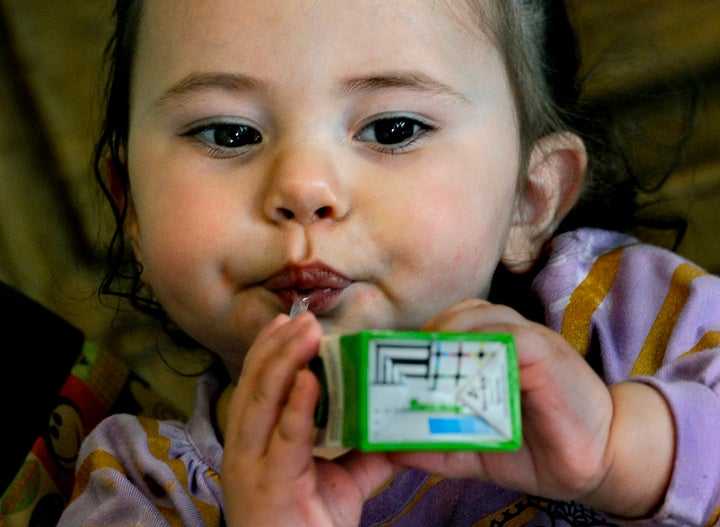
Hunger among families in the United States has dropped since the recession, but the number of struggling households remains troublingly high, a new report concludes.
One in five households with children didn’t have sufficient funds to purchase enough food last year, according to a report released this month by the Food Research & Action Center (FRAC), a group that fights hunger through public policy and public-private partnerships.
These figures were released on the heels of a separate report that found food insecure adolescents in the U.S. taking desperate, risky measures just to get something to eat.
Last year, 19.2 percent of households with children said they struggled at some point during the year to afford food, per the FRAC report. That marks a slight decline from 2014, when 20.8 percent of families said they didn’t have enough money to pay for food. Washington, D.C., and Mississippi had the highest hunger rates among families with children.
FRAC also reported that the number of households that have trouble affording food ― both those with children and without ― has fallen slightly, from 17.8 percent in 2008 to 16 percent last year.

While government programs help families in need, they’re not effective enough, the report concluded.
The shortcomings of these programs were demonstrated in a report released this month by Feeding America, a nonprofit food bank network, and the Urban Institute research group. The report found that some low-income U.S. teens are so strapped for resources that they’re engaging in transactional sex with older, wealthier adults in order to get something to eat.
While the authors weren’t certain how “prevalent” those cases are, the anecdotes outlined in the report still signify a harsh reality that advocates and government leaders can’t afford to ignore.
There are nearly 7 million children between the ages of 10 and 17 in America who struggle with hunger, per the Feeding America study.

The teens represented in that research have access to food banks, government programs and other resources, but many aren’t able to take advantage of those opportunities for a number of reasons. Sometimes it’s the overwhelming stigma that keeps teens from walking into a food pantry; for others, logistical challenges may preclude them from getting access.
The FRAC report noted that only four out of five people who are eligible for the Supplemental Nutrition Assistance Program (formerly known as “food stamps”) actually receive those benefits.
Some people aren’t aware that they’re eligible, while others struggle to navigate the red tape involved. And some are just reluctant to use the program because they’re ashamed.
And a significant number of children are missing out on breakfast in school even though it’s provided.
In 2014, nearly half of low-income kids in the U.S. didn’t eat breakfast. That was because overextended parents couldn’t get their kids to school early enough for when the meal was served, and some students were too embarrassed to admit they needed it.
To help underserved families get the food they need, FRAC is calling for more robust nutrition programs and improved access to government programs for eligible individuals.
“America has the resources to eliminate hunger for all of its citizens, regardless of age or family configuration,” the authors of the FRAC report wrote. “The cost of not doing so — in terms of damage to health, education, early childhood development, and productivity — is too high.”
